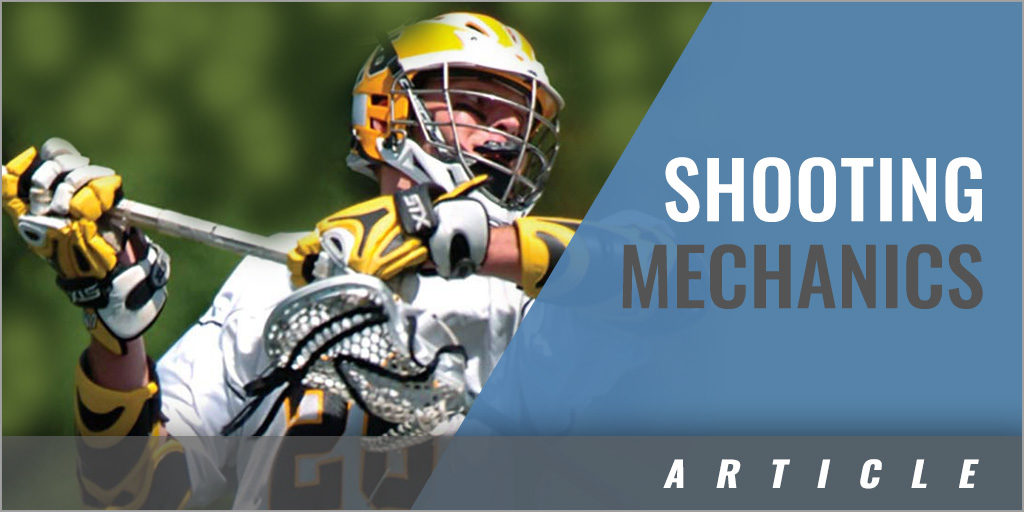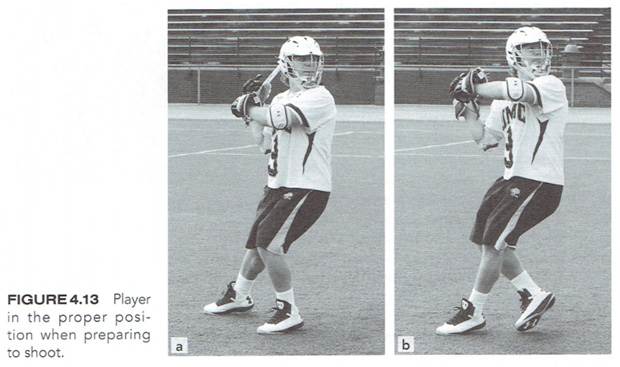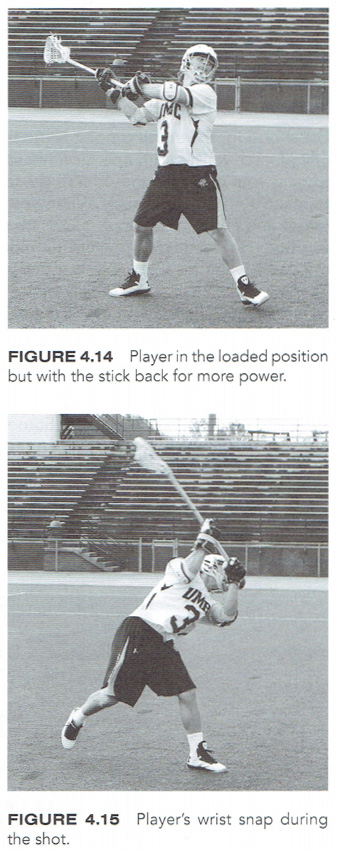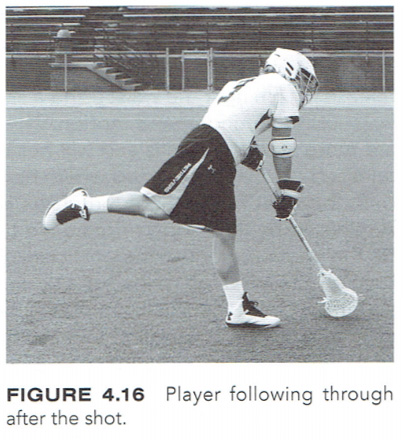|
By: Don Zimmerman and Peter England Originally Published in: Men's Lacrosse Provided by: Human Kinetics For shooting, the starting point is the triple-threat position, with your hands properly placed, waist-width apart, on the stick (see figure 4.13). The important thing is turning your opposite shoulder to the target. The momentum of your shot is going to make you turn your body. When you shoot, you will follow through toward your target and finish facing your target. It's similar to a baseball relief pitcher in the set position: He points his opposite shoulder at home plate from the set, but he faces the plate when he follows through with the pitch. If you're facing the goal, your hands and stick will be exposed to the defender, and you will likely miss the goal with your shot. For example, the majority of missed shots by right-handed players are shot wide left because the player's natural momentum pulls the ball to the left. Again, you need to keep your hands waist-width apart when shooting. Don't bring your hands together. Shooting is a combination of accuracy and power, but accuracy is more important. If your hands are waist-width apart, you can properly control your stick, and control equals accuracy. Some younger players bring their hands together because they think this gives them more power, especially with an underhand shot. However, if you bring your hands together, you lose complete control of the stick. You don't want to sacrifice accuracy for what you perceive to be power.
The shooting motion is similar to the throwing motion. You turn your torso, shoulders, and hips together in one continuous motion that naturally brings your hands and stick back into a protected position. This turning action needs to be smooth so the ball doesn't wobble in your stick. This action also puts your body and stick in the loaded position. When you turn and rotate the core muscles of your torso, this torque is loading up your body and stick. When you're properly loaded, your body is torqued, your body weight is on your back foot, and your hands and stick are back. When your stick is back, you can hide the ball from the goalie; and you can pass, shoot, or dodge (triple threat) at any given time. Again, your stick should be in the loaded position when you are preparing to shoot. Then, if you drop your butt and flex your knees, your stick movement for the shot is similar to that for the throwing motion, except you try to extend your arms a little more and your front elbow rises more for extra leverage and power as you follow through to the target. If it's an outside shot, you may want to get your hands and stick farther back to provide more power and velocity (see figure 4.14). Because your body weight is on your back foot, you push-off your back foot and step and explode through your front foot. You transfer your body weight from your back foot through your front foot. If you transfer your body weight to your front foot too early, you will lose the power from your legs (the power now comes from your arms). Your torso should rotate, and your shoulders and hips should turn your body. Your wrists are heavily involved in the shooting motion. Your wrists snap, roll over, or roll under. Wrist snap is more of an overhand shot and is part of the larger snap-pull motion (see figure 4.15). Snapping your wrists at the end of your shot applies the "finishing touch" to the shot allowing the ball to go straight and maximizing accuracy. If you roll your wrist over, the ball will have topspin and a tendency to hop. In baseball, batters roll their wrists over when they swing through the ball. If you roll your wrist under, the ball will have a tendency to backspin, skip, and pop up as if you're skipping a stone. Your hands begin waist-width apart, but your top hand slides or releases down the handle a bit, never compromising your ability to control the stick. Accuracy is more important than power, so it's natural for your top hand to slide a little - but never to a point where you're going to lose accuracy. When you shoot the ball, you can let your top hand slide down the handle and release the stick toward the target. You follow through by getting your stick and top hand through toward your target (see figure 4.16).
|









